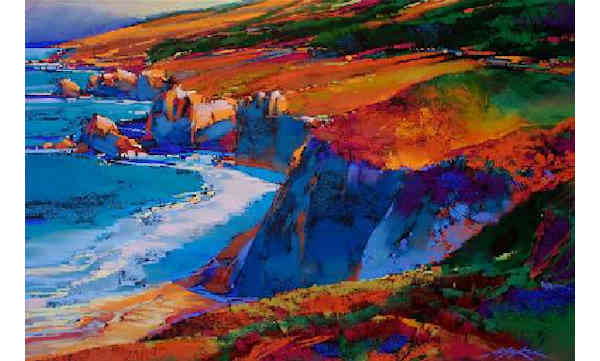The Ultimate Art Course Online

I created this blog to be sort of an art course online for beginning artists – one facet of the art school that I want BeginningArtist.com to be.
The purpose of any art school is not only to develop your technical skills.
Online art instruction should also expose you to the vast universe of different art painting ideas and different ways of thinking.
Good artists take the same very basic principles of good art I teach and use them to create strikingly different images.
And the great thing about this type of artist education is this.
No matter how you currently like to draw or paint, no matter what medium you use to create art, you can be inspired and get great art painting ideas from almost anyone.
The more experienced that artist is, the more a beginning artist can learn from them…if you take the time to really study their work.
I mean, this is the pinnacle of a free artist education. All you have to do is look.
And understand…
What they did in their art and why.
In my own, admittedly opinionated, view, any art course online or off should teach not just how you do something, but also why you would do it!
Believe me; I will have much more to say on this subject later.
Right now, as part of this installment of your mini art course online, look at this Michael McKee painting.
And ask yourself why he did what he did.
First off, it's pretty obvious that Michael loves intense colors.

But, even though these bright colors may seem unnatural or disorganized, there is definite order and purpose in their placement.
Consider first the star of his picture. Where is it? Ask yourself: where does he want you to look first? And how does he make you do that?
He grabs hold of your eyes and points them first at the dark blue cliff nearest us.
How does he do that?
He makes the cliff the largest mass of very dark cool colors. And he then surrounds it with very warm colors to make it stand out.
He also creates some very hard edges in and around that part of the cliff. Hard edges shout for your attention.
Soft edges sit quietly and wait for you to notice them.
And in the lower right foreground, he suggests more details and edges in that area. He does that by creating very visible strokes of pastel, using different colors and values.
That also draws your attention.
There, Michael just showed you three great art painting ideas in only one part of one painting.
Now, how can you use those ideas in your own work?
Best Wishes,
Gary Gumble
Founder of BeginningArtist.com
Without art the crudeness of reality would make the world unbearable. (George Bernard Shaw)
P.S. That's the big question isn't it?
"How can you use those ideas in your own work?" And that can often be hard to figure out.
Especially if you are mostly self-taught.
In my recent survey a number of you mentioned a common wish.
You most wanted to know not only how to do particular things in your art, but why to do them.
Any good art course online should teach you that.
Stay tuned.
You'll be getting a great chance to learn those things in the near future.
Copyright Gary Gumble 2023 All rights reserved About Privacy Policy Terms of Use Contact www.beginningartist.com 27 rue Roucher, 34000 Montpellier, France